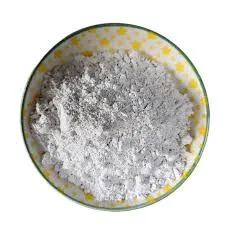- Afrikaans
- Albanian
- Amharic
- Arabic
- Armenian
- Azerbaijani
- Basque
- Belarusian
- Bengali
- Bosnian
- Bulgarian
- Catalan
- Cebuano
- Corsican
- Croatian
- Czech
- Danish
- Dutch
- English
- Esperanto
- Estonian
- Finnish
- French
- Frisian
- Galician
- Georgian
- German
- Greek
- Gujarati
- Haitian Creole
- hausa
- hawaiian
- Hebrew
- Hindi
- Miao
- Hungarian
- Icelandic
- igbo
- Indonesian
- irish
- Italian
- Japanese
- Javanese
- Kannada
- kazakh
- Khmer
- Rwandese
- Korean
- Kurdish
- Kyrgyz
- Lao
- Latin
- Latvian
- Lithuanian
- Luxembourgish
- Macedonian
- Malgashi
- Malay
- Malayalam
- Maltese
- Maori
- Marathi
- Mongolian
- Myanmar
- Nepali
- Norwegian
- Norwegian
- Occitan
- Pashto
- Persian
- Polish
- Portuguese
- Punjabi
- Romanian
- Russian
- Samoan
- Scottish Gaelic
- Serbian
- Sesotho
- Shona
- Sindhi
- Sinhala
- Slovak
- Slovenian
- Somali
- Spanish
- Sundanese
- Swahili
- Swedish
- Tagalog
- Tajik
- Tamil
- Tatar
- Telugu
- Thai
- Turkish
- Turkmen
- Ukrainian
- Urdu
- Uighur
- Uzbek
- Vietnamese
- Welsh
- Bantu
- Yiddish
- Yoruba
- Zulu
Nov . 20, 2024 04:35 Back to list
types of disinfectants used in veterinary practice
Types of Disinfectants Used in Veterinary Practice
In veterinary practice, maintaining a clean and safe environment is crucial for the health and well-being of animals, as well as for the protection of the staff and clients. Disinfectants play an essential role in infection control, helping to eliminate pathogens and prevent the spread of diseases. Various types of disinfectants are employed in veterinary clinics and animal facilities, each with unique properties and applications.
One of the most common types of disinfectants used in veterinary practices is quaternary ammonium compounds (quats). These are effective against a wide range of bacteria, viruses, and fungi. Quats are favored for their broad-spectrum activity, low toxicity, and minimal residue. They are often used on surfaces, equipment, and in some cases, directly on animal housing areas. However, care must be taken as organic matter can reduce their effectiveness.
Chlorine-based disinfectants are another popular choice, especially in situations where biosecurity is paramount, such as in kennels or during outbreaks of infectious diseases
. Bleach (sodium hypochlorite) is a well-known example that effectively kills bacteria and viruses, including parvovirus and distemper virus. However, chlorine can be corrosive and may damage sensitive surfaces, so careful dilution and application guidelines must be followed.types of disinfectants used in veterinary practice

Alcohol-based disinfectants, typically containing isopropyl alcohol or ethanol, are effective against a broad spectrum of pathogens, including bacteria and viruses. They evaporate quickly and are often used for disinfecting surfaces and equipment. However, they are less effective in the presence of organic matter, and their use may be limited in large animal settings due to the requirement for significant contact time.
Phenolic compounds are also utilized in veterinary practices for their effectiveness against bacteria, including resistant strains. They are particularly useful in hard surface disinfecting but can be toxic to some animals, so handlers must follow appropriate safety protocols.
Lastly, hydrogen peroxide and peracetic acid provide an environmentally friendly option for disinfection. They are effective against a wide range of pathogens and can break down into non-toxic byproducts, making them suitable for use in sensitive environments.
In conclusion, the selection of disinfectants in veterinary practice is influenced by the specific pathogens present, the surfaces being disinfected, and safety considerations for both animals and humans. The effective use of these agents is a cornerstone of infection control, promoting healthier environments for veterinary care. Regular training and adherence to best practices ensure that veterinary professionals can utilize disinfectants effectively to protect the health of animals and prevent disease transmission.
-
Guide to Oxytetracycline Injection
NewsMar.27,2025
-
Guide to Colistin Sulphate
NewsMar.27,2025
-
Gentamicin Sulfate: Uses, Price, And Key Information
NewsMar.27,2025
-
Enrofloxacin Injection: Uses, Price, And Supplier Information
NewsMar.27,2025
-
Dexamethasone Sodium Phosphate Injection: Uses, Price, And Key Information
NewsMar.27,2025
-
Albendazole Tablet: Uses, Dosage, Cost, And Key Information
NewsMar.27,2025













